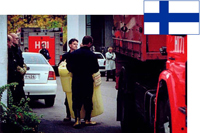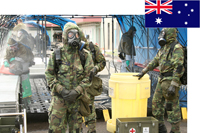In the United States, OSHA set a June 1 deadline for end users to update their workplace chemical labels. If compliance is lacking, industrial end users must be prepared to document for OSHA their good faith efforts to become compliant, including an expected timeline for achieving it.
The Globally Harmonized System (GHS) was established by the United Nations to create a unified system for identifying and communicating hazardous chemicals. According to OSHA, the new standard covers over 43 million workers who produce or handle hazardous chemicals in more than 5 million workplaces across the country.

In an industrial setting, chemical formulations that could require GHS labeling include industrial primers, coatings, sealants and lubricants; greases, cutting oils and rust removers; acid-, alkaline-and solvent-based cleaners; and degreasers, surfactants, disinfectants and sanitizers.
“Staying GHS compliant will not only help industrial end users avoid OSHA fines, sanctions or auditing, but also position them ahead of the curve if other industry standards are allowed to sunset,” says Glenn Hallett, president of RightAnswer.com Inc., a chemical compliance and information specialist.
Hallett notes that remaining GHS label compliant depends on the durability of the appropriate label substrate, getting the label content right and effective document management.
With a GHS deadline looming for industrial end users, here are six tips to quickly get up to speed on GHS regulation and ensure compliance for even smaller, down-packed chemical container labeling.
1) Have GHS-compliant safety data sheets and labels and train workers to handle hazardous chemicals properly. On each GHS label, six items of data are required: product name or identifier, hazard statement, signal word, GHS pictogram symbols, a precautionary statement and supplier information.
Instead of the familiar black and white pictogram symbols previously used in safety labeling, GHS labels now require pictogram symbols that convey hazard information with a red diamond border.
2) Label all secondary containers. If a chemical is supplied to the workplace with a GHS label, it must be maintained. If the chemical is transferred to a secondary container, such as a tank or spray bottle that stays in the workplace, employers may label it with information from the original GHS shipping label or safety data sheet.
However, employers may choose to use an alternate system such as the National Fire Protection Association’s (NFPA) Standard 704 or the American Coatings Association (ACA)’s Hazardous Materials Identification System (HMIS). If using an alternate system, the employer must ensure the information is consistent with GHS and that workers understand specific physical and health hazards.
If a chemical is transferred to a portable secondary container – such as a dropper bottle – for use only by the person who transferred it during the same work shift, a label is not required because it is considered “immediate use.”
3) Printing labels on demand can help you keep up with changes. For facilities currently using HMIS or NFPA labels for in-plant containers, related written documentation and training, the question is how to achieve GHS compliance and integrate it with HMIS or NFPA, which have been used for decades.
Though differences exist in GHS, HMIS and NFPA, such as opposite numbering for GHS level of hazard, OSHA allows employers to use HMIS and NFPA in the workplace as long as they are consistent with GHS (HCS 2012) and workers are properly trained for GHS.
Implementing GHS labeling can seem daunting to industrial end users, but does not have to be. Many are turning to flexible options, such as industrial-grade labels, that allow printing durable GHS, HMIS or hybrid labels on demand with existing laser printers and certain inkjet printers.
Unlike standard labels, industrial labels are used in harsh environments like warehouses, manufacturing facilities and in the field, so they must be very durable and able to withstand exposure to chemicals, abrasion, tearing, moisture, sunlight and extreme temperatures.

Unlike office labels, which crack and harden in harsh conditions, the GHS labels are UV-resistant with two or more years of outdoor UV life. They also are temperature-resistant, can be applied as low as 10° F and used between -20° F to 220° F when printed from color laser printers or -40° F to 300° F when printed from pigment-based inkjet printers.
5) Take advantage of free, label-printing software. Some companies provide such GHS-, HMIS- and NFPA-compliant label software at no cost. The software allows employees to create and print their own GHS and HMIS labels from pre-designed templates. They can create on-demand labels step-by-step at their desk, as well as create GHS and HMIS hybrid labels capable of satisfying both systems. Most employees find such a process intuitive, since it resembles creating an office document from pre-designed templates.
The software includes the pictograms and GHS-compliant statements needed for GHS labeling; allows customizable text, as well as insertion of company logo or other images; generation of of barcodes; and a sequential numbering feature to add lot numbers or other variable data.
6) Choose GHS labels that work with the full range of container sizes and container surface types. GHS and HMIS labels are available in a range of sizes to fit drums, totes, pails, cans, jugs, containers and even small bottles. They can be applied to a variety of surfaces such as metal, plastic, glass, ceramic, polycarbonate, painted surfaces and more.
“Companies in industrial settings that have long used HMIS labels will now also want the ability to print GHS labels, HMIS labels, NFPA labels or some alternative that will accommodate their requirements,” says Hallett. “Such flexibility will help ease the industry’s transition to GHS labeling and minimize any operational disruption.”
Through a portal in Avery’s web site, RightAnswer offers comprehensive online access to over 100 proprietary, government and EHS data sources with over 11 million documents covering more than 400,000 chemical substances, all integrated and available through a single interface.
about the Author: Del Williams is a technical writer based in Torrance, Calif.



